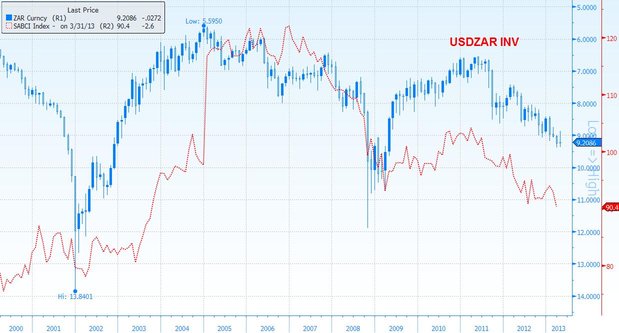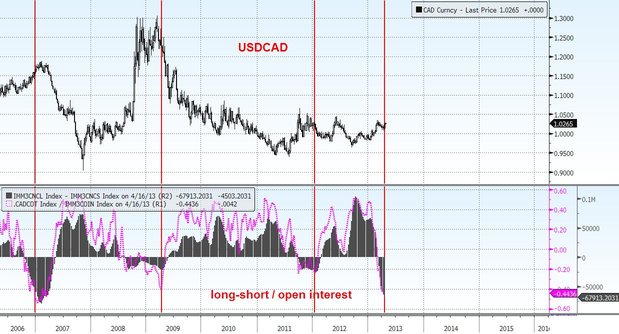The coming week is going to be full of macroeconomic data from America. Two dates are likely to be kept under close observation. The first of May, the Fed will decide on interest rates and on the same day we will be able to know the ISM manufacturing. Two days later, on May 3rd, the unemployment data Ism services. Every day, however, is going to provide economic information on the health of the economy. On Monday, April 29th income and personal spending, on April 30th home prices and consumer confidence, on May 2nd, the trade balance. At this point it is worthwhile to continue on the trading range, so we would go long on EUR/USD at 1.30 stop 1.29.
IS IT TIME TO CUT THE RATES IN EUROPE?
On Thursday, May 2nd, Mario Draghi could cut interest rates in Europe, or at least pre announce it if the previous data will still be disappointing. In particular, the consumers and business confidence on April 29th, and inflation of April 30th will be a good barometer. Also, not to be ignored the PMI manufacturing and services indices of May 2nd.
Still in Europe, but this time on the other side (UK), attention to house prices (April 29th ) and PMI services (May 3rd).
JAPAIN AGAIN
The data coming from Japan will be very important in the next months as they will help us understanding whether the BOJ monetary policy and the devaluation of the JPY are producing effects. On April 30th we will be able to know the unemployment, industrial production and retail sales.
Emerging markets
China HSBC manufacturing (April 30th ) - HSBC services (May 3rd ) India: HSBC manufacturing (May 1st ) - HSBC services (May 3rd ) - Inflation + trade balance (May 2nd )
SOUTH AFRICAN EFFECT
There is no macroeconomic indicator that can let us think of a strengthening of the Rand in the short term. In the coming week , the PMI index of business confidence Kagiso will be published (May 2nd ) and as we can see from the graph, the correlation with UsdZar (here on reverse scale) is remarkable. A further deterioration of the climate will push down the Rand even further. On April 30th, the data on the trade balance in South Africa will also be published. Also noteworthy: the seasonal strength of UsdZar, that rose in 6 of the last 7 years in May.
The upward pressure on USD/CAD should be close to an exhaustion and this helps us in the analysis of the Cot Report on the futures market of the Canadian Dollar. As we can see from the chart, the hedge has reached a record level of net short positions on the CAD, similar to the one of 2007, but also in terms of percentage on the open interest, we are now over 40%, an excess of negative feelings that, as in the past, could now be rescheduled. Going long on the CAD at this point could be an interesting choice to take advantage of a possible rebound in commodities.
- English (UK)
- English (India)
- English (Canada)
- English (Australia)
- English (South Africa)
- English (Philippines)
- English (Nigeria)
- Deutsch
- Español (España)
- Español (México)
- Français
- Italiano
- Nederlands
- Português (Portugal)
- Polski
- Português (Brasil)
- Русский
- Türkçe
- العربية
- Ελληνικά
- Svenska
- Suomi
- עברית
- 日本語
- 한국어
- 简体中文
- 繁體中文
- Bahasa Indonesia
- Bahasa Melayu
- ไทย
- Tiếng Việt
- हिंदी
Economic Data: Eyes On America And ECB
Published 04/29/2013, 03:28 AM
Updated 07/09/2023, 06:31 AM
Economic Data: Eyes On America And ECB
FED AND UNEMPLOYEMENT
Latest comments
Loading next article…
Install Our App
Risk Disclosure: Trading in financial instruments and/or cryptocurrencies involves high risks including the risk of losing some, or all, of your investment amount, and may not be suitable for all investors. Prices of cryptocurrencies are extremely volatile and may be affected by external factors such as financial, regulatory or political events. Trading on margin increases the financial risks.
Before deciding to trade in financial instrument or cryptocurrencies you should be fully informed of the risks and costs associated with trading the financial markets, carefully consider your investment objectives, level of experience, and risk appetite, and seek professional advice where needed.
Fusion Media would like to remind you that the data contained in this website is not necessarily real-time nor accurate. The data and prices on the website are not necessarily provided by any market or exchange, but may be provided by market makers, and so prices may not be accurate and may differ from the actual price at any given market, meaning prices are indicative and not appropriate for trading purposes. Fusion Media and any provider of the data contained in this website will not accept liability for any loss or damage as a result of your trading, or your reliance on the information contained within this website.
It is prohibited to use, store, reproduce, display, modify, transmit or distribute the data contained in this website without the explicit prior written permission of Fusion Media and/or the data provider. All intellectual property rights are reserved by the providers and/or the exchange providing the data contained in this website.
Fusion Media may be compensated by the advertisers that appear on the website, based on your interaction with the advertisements or advertisers.
Before deciding to trade in financial instrument or cryptocurrencies you should be fully informed of the risks and costs associated with trading the financial markets, carefully consider your investment objectives, level of experience, and risk appetite, and seek professional advice where needed.
Fusion Media would like to remind you that the data contained in this website is not necessarily real-time nor accurate. The data and prices on the website are not necessarily provided by any market or exchange, but may be provided by market makers, and so prices may not be accurate and may differ from the actual price at any given market, meaning prices are indicative and not appropriate for trading purposes. Fusion Media and any provider of the data contained in this website will not accept liability for any loss or damage as a result of your trading, or your reliance on the information contained within this website.
It is prohibited to use, store, reproduce, display, modify, transmit or distribute the data contained in this website without the explicit prior written permission of Fusion Media and/or the data provider. All intellectual property rights are reserved by the providers and/or the exchange providing the data contained in this website.
Fusion Media may be compensated by the advertisers that appear on the website, based on your interaction with the advertisements or advertisers.
© 2007-2024 - Fusion Media Limited. All Rights Reserved.
